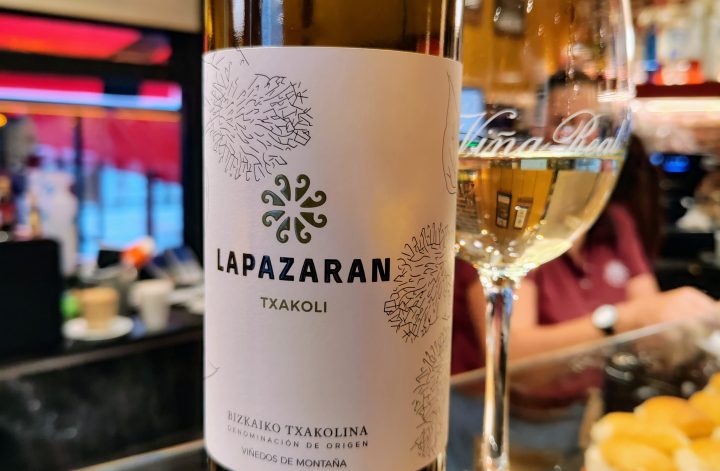As you probably know, one of my great passions is tasting wine. In Spain, I couldn’t miss out on trying cava, the local traditional sparkling wine.
Spanish Cava
What is Cava
Cava is a Spanish sparkling wine made using the traditional method of bottle fermentation, similar to French Champagne. The name “cava” means “cellar” in Spanish, referring to the places where the wine matures. Cava production is limited to designated areas in Spain, primarily in Catalonia, but it is not confined to just one specific region.

The process of making cava begins with grape pressing and the fermentation of the base wine. The wine is then bottled, and yeast and tirage (sugar) are added for secondary fermentation. The bottles are stored in cellars, where the cava matures for at least 9 months (for Reserva, 15 months; for Gran Reserva, at least 30 months). The yeast is then removed through a process called disgorging. At this stage, some producers add a “dosage,” a mixture of wine and sugar, which adjusts the final taste and sweetness of the wine. The bottle is finally sealed with a cork and wire cage.
Cava differs from Champagne mainly in the grape varieties used and the region of production. However, the taste is comparable – sparkling, fresh, and with fine bubbles.

The History of Cava
The first references to sparkling wine in Spain date back to the 19th century. In 1872, Josep Raventós founded the Codorníu winery in the town of Sant Sadurní d’Anoia and began experimenting with making sparkling wine using the traditional method. He played a significant role in the development and popularization of cava.
The official beginning of cava is considered to be in 1887, when the first bottles labeled as “Cava” were produced. Codorníu eventually became the largest winery in the region. Other major brands like Freixenet and Juvé y Camps followed in its footsteps.
During the 20th century, cava’s popularity grew. In 1972, cava officially gained DO (Denominación de Origen) status. Today, cava is the world’s second best-selling sparkling wine after Champagne.
Where Cava is Produced
Over 90% of all cava is produced in Catalonia, primarily in the Penedès region south of Barcelona. The main production hub is the town of Sant Sadurní d’Anoia, home to most of the major wineries.
Other areas with DO Cava designation include parts of the provinces: Aragón, Basque Country, Extremadura, Navarra, Rioja, and Valencia. Each of these regions has slightly different climate conditions and soil composition, which are reflected in the local cava styles.
Grape Varieties Used in Cava
The primary traditional grape varieties for cava production are Macabeo, Xarel·lo, and Parellada. Macabeo adds freshness and fruity aromas, Xarel·lo provides body and structure, and Parellada contributes finesse and elegance.
In recent years, international varieties like Chardonnay and Pinot Noir have become more prominent. For rosé cava, red grape varieties like Garnacha and Monastrell are used.
Types of Cava
Cava is categorized based on the amount of residual sugar in one liter of the final product:
- Brut Nature: 0-3 g/l, with no added sugar
- Extra Brut: 0-6 g/l
- Brut: 0-12 g/l
- Extra Seco: 12-17 g/l
- Seco: 17-32 g/l
- Semi Seco: 32-50 g/l
- Dulce: 50+ g/l
Another classification is determined by the aging time:
- Cava: min. 9 months
- Reserva: min. 15 months
- Gran Reserva: min. 30 months
- Paraje Calificado: min. 36 months
Most cavas are blends of multiple grape varieties, but there are also single-varietal cavas and vintage wines. The vast majority of cava (90%) matures for the basic 9 months.

The Most Famous Cava Producers and Brands
The largest producers of cava are Codorníu and Freixenet, which together account for more than half of the production. Their flagship products include Codorníu Clasico Brut and Freixenet Cordon Negro Brut. Other notable brands include Juvé y Camps with their Reserva de la Familia cava, Gramona with Imperial Gran Reserva, Segura Viudas Reserva Heredad, and Recaredo Terrers Brut Nature Gran Reserva.
Among smaller and lesser-known but highly quality-focused producers, Agusti Torello Mata, Raventós i Blanc, Llopart, Mestres, Nadal, Sumarroca, and Torelló are worth mentioning. Opt for their cavas, and you won’t miss out on an extraordinary experience.
Cava is excellent as an aperitif, but it also pairs well with white meats, fish, seafood, and other Spanish dishes. Spaniards also toast with cava during the New Year’s tradition of eating twelve grapes. If you haven’t tried cava yet, give it a chance. I believe you’ll find your favorite.
Cheers, and drink responsibly!


